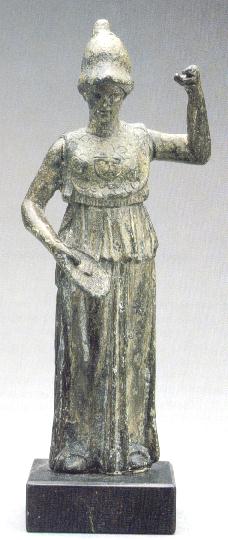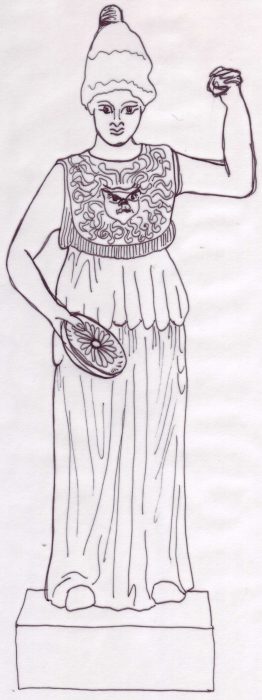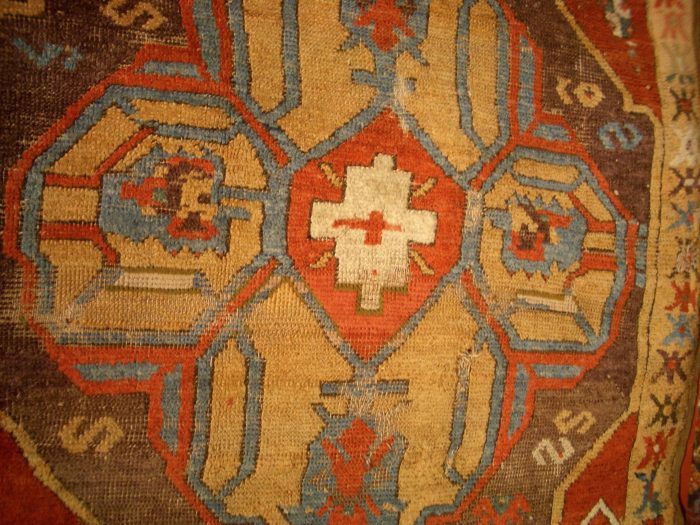Freud’s Athena
This painting of a bronze Athena statue is one of my twelve smaller gilded paintings which together form Significantly Freud: Icons for a Jewish Atheist, representing my favourite twelve artefacts from the private collection of Sigmund Freud.
The Greek Goddess Athena supposedly gave birth to herself by leaping out of her father Zeus’s forehead, already armed with weapons and shouting a war cry. She was the Virgin Protector of Athens and the Temple of Parthenon was built on top of the Acropolis to honour her. She was a warrior goddess with the head of Medusa on her breastplate, a protective device against the Evil Eye. Most Greek women were treated little better than slaves, yet Athena was the companion of heroes and the Goddess of heroic behaviour. Although Freud referred to females as castrated males (his Athena has no spear, no phallus) yet to him she is perfect, his favourite hero and he felt proud and rich under her protection.

Das Heldentum (Heroism)
The red script Das Heldentum translates as “Heroism”. For me this signifies Freud’s contemplation of the deeds of heroes from antiquity and his attempt to weave their exploits into interpretations of our daily life.

This statue of Athena was Freud’s most treasured artefact, a tiny 104 mm bronze statue that held pride of place on his desk and was one of only two of his artefacts smuggled out of Nazi-controlled Austria in 1938. The statue is quite battered but indicated to Freud “that wisdom does not need to be bold or beautiful to command attention and respect.” (The Gods of Freud, Janine Burke, p.311)

One of my original sketches for this painting.
“When it seemed he would lose his entire collection when the Nazis occupied Vienna in 1938, he selected two works to be smuggled out, to represent all that his collection meant to him. One of those was Athena, the other a tiny Jade Screen (Qing Dynasty, 19th century). He showed Athena to the American poet Hilda Doolittle, who was one of his patients, telling her, ‘This is my favourite. Only she has lost her spear.’ ” (Janine Burke Sigmund Freud’s Collection, Monash University, November 2007)

The colour of the frame and desktop in this painting was inspired by a green velvet chair in Freud’s study and also the green in part of this geometric rug design.